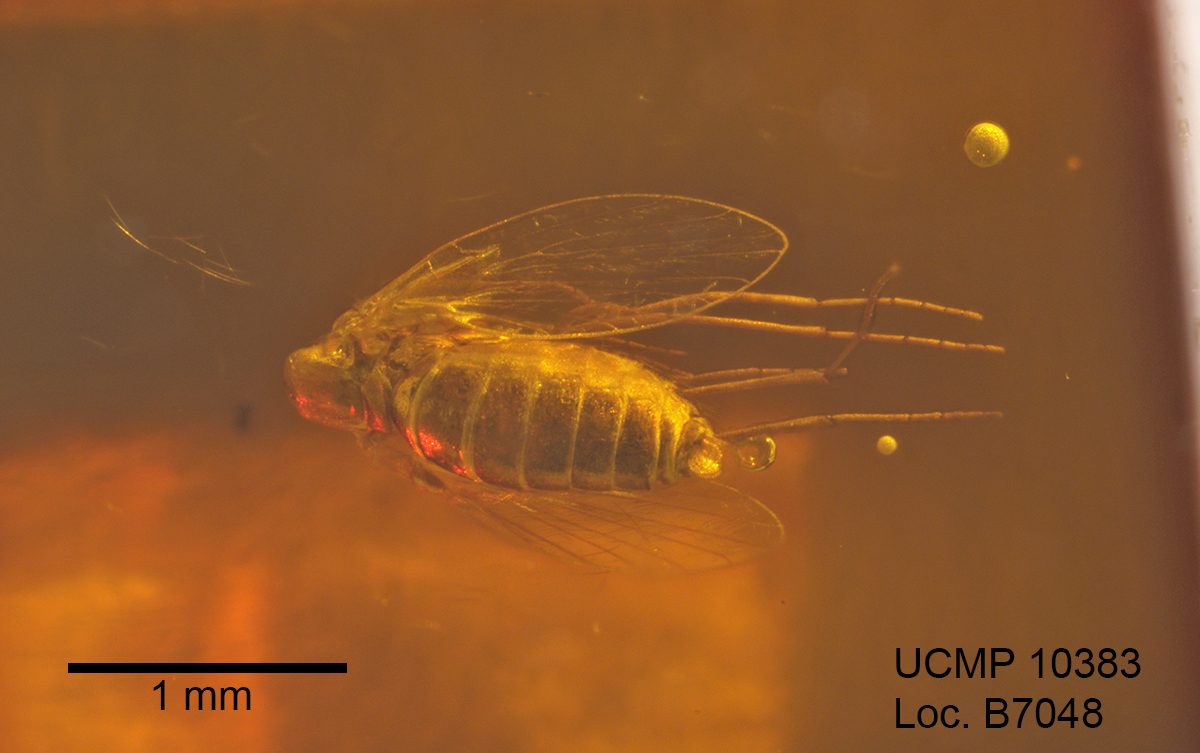The UCMP amber collection is one of the largest in the country with specimens primarily from the Baltic region, Dominican Republic, Alaska, the Philippines, and Mexico. The bulk of the collection is from the Oligocene-early Miocene of Chiapas, Mexico, and it is the largest institutional-held collection in the United States. Frans Blom, a Harvard-educated archaeologist who studied Mayan culture and their ruins throughout the state of Chiapas, is largely responsible for the acquisition of UCMP’s collection during the 1950s and early ’60s. He collected and bought Chiapas specimens as well as facilitated amber collecting trips to Chiapas for former UC Berkeley paleontology and entomology faculty. To date, 2,480 UCMP specimens are databased and accessible through the online UCMP database search. The metadata and images are also published via the Berkeley Natural History Museums IPT to the online web resources iDigBio, iDigPaleo, GBIF (Global Biodiversity Information Facility), and EOL (Encyclopedia of Life). By the end of the PEN project in 2017, the PEN team had uploaded over 1,700 images of the whole specimen slide mounts with label data and 543 high resolution type specimen inclusions that are now available on Calphotos. All specimen lower resolution jpegs are available on iDigBio, iDigPaleo, and EOL. Since 2018, the IMLS team has resin-embedded 1411 type and non-type amber pieces and is currently in the process of imaging the inclusions using the Keyence VHX 7000 digital microscope.

